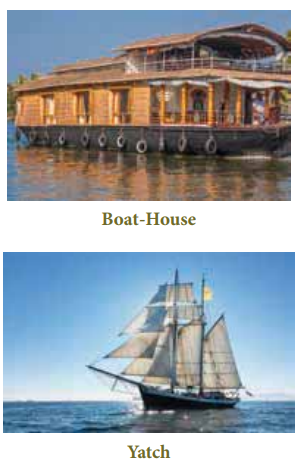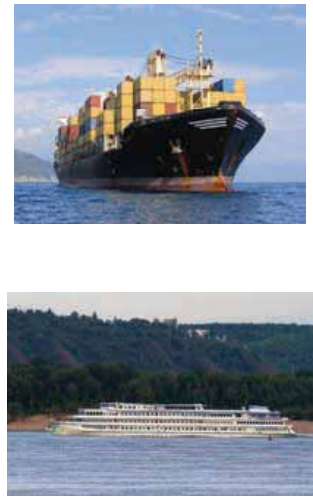Types, Characteristics, Advantages, Disadvantages - Water Transport | 11th Commerce : Chapter 14 : Transportation
Chapter: 11th Commerce : Chapter 14 : Transportation
Water Transport
Water Transport
“Water is a free gift of nature’. Human
civilization through gradual
application of science and technology, have utilized water resources for
economic, political and military activities. Remarkable
advancements are taking place in water transport due to considerable
improvement in the construction, design motive power, speed and safety of ships
and boats.
Water transport is the process of moving
people, goods etc. by barge, boat, ship or sailboat over a sea, ocean, lake,
canal, river, etc. This category does not include articles on the transport of
water for the purpose of consuming the water. Water Transports are of two types
(i) Inland Waterways ii). Ocean
Waterways
i. Inland Waterways
Inland Waterways comprise of rivers,
canals and lakes. It is also known as
internal water transport. Rivers that are naturally navigable are called
natural waterways. Canals and canalized rivers belong to the category of
‘Artificial Waterways’. Generally small boats
and steamers are
operated on rivers to transport
people and goods. Where rivers are deep enough, large ships can also ply on
them. Canals are man- made waterways, constructed for the twin purposes of
navigation and irrigation.

Advantages of inland waterways
·
It
is considered as the cheapest mode
of transport among the other modes of transport.
·
It carries goods smoothly due to the
absence of shaking and jolting during transit. It is eminently suitable for the
carriage of fragile goods like glassware, earth ware etc., without causing
damage.
·
It is most suitable for heavy loads.
·
There is lesser pollution in water
transport.
·
Initial investment on river services as
well as expenditure on their maintenance is much lesser as compared to road and
rail transport.
Disadvantages of inland waterways
·
It is the slowest means of transport. As
compared to this, railways are quicker, safer and cheaper means of transport.
·
Floods caused during rainy season, lack
of flow of water during summer season affect to ply boats and steamers.
·
Sometimes rivers also change their way.
It leads to stoppage and uncertainty in usage of this means of transport.
ii. Ocean or Sea Transport
Ocean
transport has been
playing a significant role
in development of economic,
social and cultural relations among countries of the
world. International trade owes its growth to ocean transport. Ocean transport enjoys a pride of place in aiding international
trade. Cheapness is its great virtue. In the transportation of low-grade, bulky
goods among the countries, the role of ocean transport is commendable.
Types of Ocean Transport
Ocean transport may be divided into two
broad categories.
a. Coastal shipping
Coastal shipping constitutes an
important means of transport in all countries having a long coastline. It is a cheap means of
transport for the movement of bulky cargoes like coal, iron ore etc. to
domestic ports of country. Usually, coastal shipping

b. Overseas shipping
It means the passengers’ and goods have
to cross ocean. Example India export goods to America.
Ocean going ships may also be divided into two, namely Liners and Tramps:
i. Liner
An ocean liner is a passenger ship
primarily used as a form of transportation across seas or oceans. Liners may
also carry cargo or mail, and may sometimes be used for
other purposes (e.g., for pleasure cruises or as hospitals ship). They sail to
schedule, whether they have a full load or not. They follow defined routes with
fixed places and times of call. Regularity of service, god sped and luxurious
facilities to passengers are the specialties of liners.
There are two types of liners,
namely, Passenger liners and Cargo
liners.
ii. Tramps
Tramps are essentially cargo vessels. See the picture above. They have no set routes. They do not follow any timetable. They sail only when they get sufficient load. They sail at any time and carry cargoes for almost any ports.
The following is the major types of
commercial ships
1. General cargo ship 2. Bulk carriers
3. Container ships 4. Auto carrier 5. Tankers
6. Fishing vessels 7. Oil vessels 8.
Passengers ships 9. Ferryboats 10. Tow and tug boats
11. Specialized ships
Related Topics